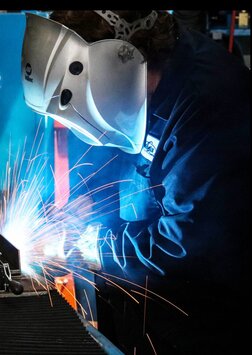Using Root Cause Analysis to Address Welding Consumable Issues
Estimated reading time: 4 minutes
Troubleshooting problems with welding consumables can be time-consuming and expensive. From the associated downtime to the cost of replacing contact tips, diffusers, nozzles and liners, companies stand to lose productivity and potentially miss production goals.

Applying root cause tools can help expedite the process. These are structured methods to narrow down the true cause of a problem and determine an exact solution.
At a high level, root cause analysis follows several key steps:
- Defining the problem
- Collecting information
- Identifying issues that are contributing to the problem
- Determining the root cause
- Recommending and implementing the solution
To successfully implement root cause tools, it’s important to keep an open mind about possible causes that are contributing to welding consumable problems and to be patient, as it may take time to determine a cause and solution. Analytical thinking, along with being thorough and unbiased in the assessment, is a must.
The 5 Whys
The 5 Whys is a common and simple root cause tool to apply to welding consumable issues. It involves asking “Why?” five times, and providing answers, to drill down to the root cause. In some instances, the solution may become apparent after fewer than five questions. Other times, it may take more. It is also possible that the questioning may become circular and require branching off into another line of questions. Once the root cause is identified, companies can home in on the right solution and determine ways to prevent further problems.
For example, companies may ask the following if there are issues in a semi-automatic welding operation:
- Why do we have an erratic arc? Because the welding wire is feeding poorly.
- Why is the welding wire feeding poorly? Because the wire feeding path is blocked.
- Why is the wire feeding path blocked? Because the liner is kinked up.
- Why is the liner kinked up? Because it was trimmed incorrectly.
- Why was the liner trimmed incorrectly? Because welding operators didn’t measure it properly
Knowing this information, companies may determine they need to train welders to use a liner gauge during trimming and installation. AccuLock™ S consumables are another option, as these have a liner that eliminates liner trim length errors without the need to measure. The liner locks and aligns at the front and back of the gun to provide a flawless wire feed path.
To gain the best results from The 5 Whys, engage employees who have hands-on experience with the welding process. Quality engineers are also great resources to include.
Failure Modes & Effects Analysis (FMEA)
FMEA assesses how a failure could occur, its causes and what the potential consequences of a failure would be. FMEA follows the same logic as The 5 Whys to drill down to a root cause. Engineers use this tool proactively during the design of components like welding consumables. Companies can also use FMEA over the course of using these products as a troubleshooting method.
Keeping with the example of welding consumables, a FMEA for troubleshooting may look like this in a robotic welding operation:
- Failure mode: Off-location welds.
- Potential consequence: Non-conforming parts.
- Potential cause: Cross-threaded contact tip.
- Current process controls: Train employees to install contact tips correctly.
Potential solution: Use a contact tip that can’t be cross-threaded. These can be found in the AccuLock R consumables system.
When using FMEA or The 5 Whys to troubleshoot welding consumables issues, it’s important to look at all aspects of the situation to accurately determine the root cause. While it may seem time-consuming, investing in the use of these methods can actually save time in the long term — not to mention frustration and costs.